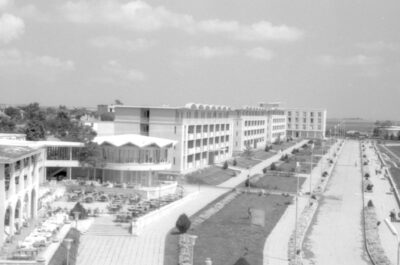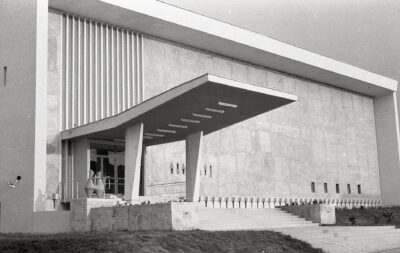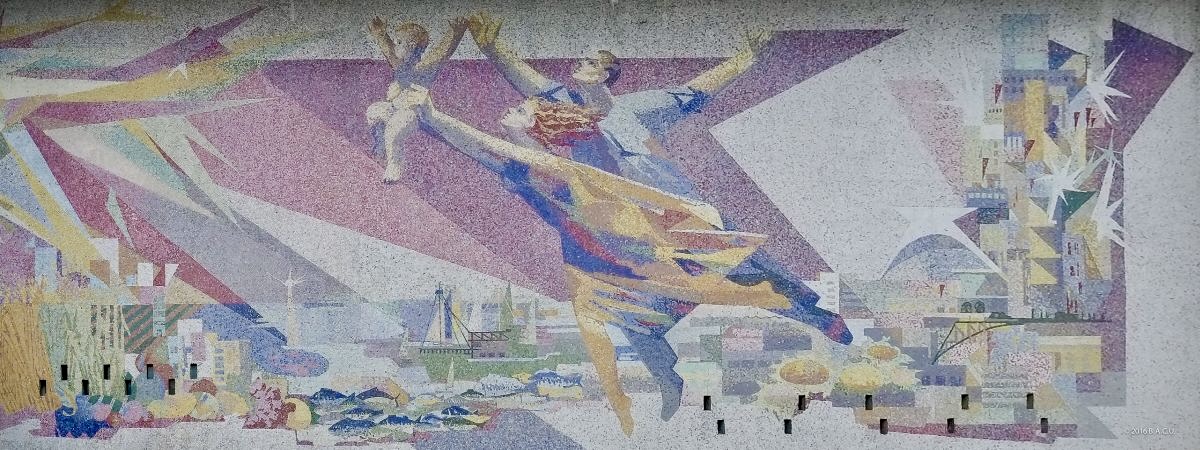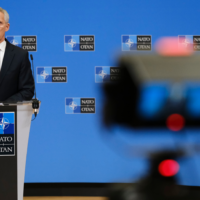Romania (Brussels Morning) In the world of art, the most beautiful and significant creations can be often accompanied by the most captivating stories. Such is the case of the “Genesis” mural mosaic from Mangalia, a small seaside city in Eastern Europe – an impressive artwork that delights the views but also hides an authentic story about courage in the face of political oppression at that time.
With the rapid development of Romanian tourism in the 1950s, the huge potential of the city of Mangalia caught the attention of the communist leader Nicolae Ceaușescu. Without much hesitation, he quickly mobilized the workforce, led by the architects and engineers of the time. Shortly after, the first hotels and residential complexes were being inaugurated by the seaside. Among these, the urbanization plan also included holiday homes, a spa sanatorium, sports halls, libraries, a stadium, a casino, theatres, a cinema garden, and a cultural center.

Built between 1959 and 1962, the Cultural Center of Mangalia is a symbol of modernization from the communist period. Designed by architect Nicolae Vlădescu, the brutalist building stands out for its asymmetric design and concrete canopy. Its functionality included theatres, cinemas, a summer club, and much more, offering residents and tourists a diverse cultural space.
The building, with its grandeur and imposing character, formed the basis of the square created for the new development project along the seaside. Moreover, its completion marked a significant monument for the entire period of progress on the Romanian coast. However, what really draws attention to the edifice is the imposing mural, in vibrant colors, added later to the main façade. Named “Genesis,” it was the artifice meant to humanize the entire concrete structure.
The work, created by artists Jules Perahim and Mac Constantinescu, symbolises elements of life and was one of the largest mural mosaics in the socialist countries, composed of over 3 million colored pieces of natural stone. If today the mosaic stands out both by its scale and artistic qualities, things were different at the time of its initial unveiling. Moreover, the controversy created by it would have changed the course of the life of its creator, Jules Perahim.
The mosaic blends symbols of nature – water, earth, air, and sun – with the representation of a family, implicitly human progress, the whole ensemble being completed by sailing boats, tall buildings, and vegetation. The dissatisfaction expressed by the party would have originated in the artistic representation, more precisely in the illustrated symbols – or their absence. Controversies arose from the humanistic character of the work, as well as the absence of traditional communist symbols, such as the sickle and hammer, or workers and farmers. These were replaced with natural elements and a palette of vibrant colors, reminiscent of modernism and Perahim’s early works.
In a period when arts were tightly controlled and used as a tool of political propaganda, the work of Jules Perahim and Mac Constantinescu was perceived as an act of defiance, through the absence of traditional socialist symbols. Regardless of the actual reasons, the artists were accused of disloyalty to the socialist spirit and the representative architecture of Eastern Europe at that time. After the critics’ interpretation, an official investigation also took place, with real consequences.

Artist Jules Perahim was eventually forced to take full responsibility for the alleged omission of communist symbols. Furthermore, since the state was the main client of socialist artists, Perahim suffered severe repercussions, leading him to leave Romania and immigrate to Israel. Mac Constantinescu continued to work in Romania, but under the careful supervision of the authorities, avoiding sensitive political themes in his subsequent works.
The departure of the artist represented a great loss for Socialist Romania. However, his works have stood the test of time. The mosaic from Mangalia has survived the years and continues to delight passers-by amazed by its scale and the natural, real symbols. Today, “Genesis” remains a symbol of artistic resistance, and for the inhabitants of Mangalia and beyond, this mosaic represents the triumph of humanity over socialism.
You can find the original article and many more here:



